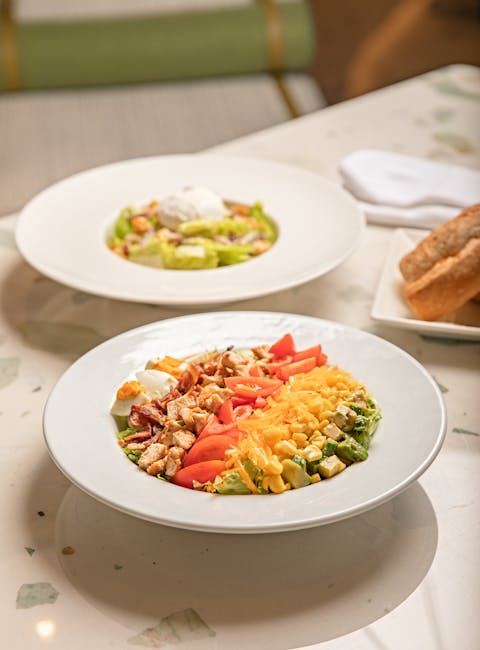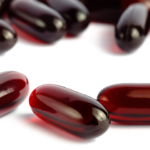Protein Powder Recipes: Delicious and Healthy Meal Ideas
Protein powder is a versatile ingredient that can elevate your culinary game, offering a convenient way to boost protein intake and create delicious, healthy meals. Beyond the typical shake, protein powder can be incorporated into a wide variety of recipes, adding nutritional value and enhancing texture. This guide provides a collection of innovative and satisfying meal ideas, categorized for easier navigation.
I. Breakfast Powerhouses:
-
Protein Pancakes: Ditch the processed pancake mix and create healthier, protein-packed pancakes. Combine 1 cup of oats (rolled or quick-cooking), 1 scoop of your favorite protein powder (whey, casein, or plant-based), 1 egg, 1/2 cup milk (dairy or non-dairy), and a pinch of baking powder. Mix thoroughly, cook on a lightly oiled griddle, and top with fresh fruit, nuts, or a drizzle of honey. Experiment with different flavors by adding cocoa powder, cinnamon, or vanilla extract. For a gluten-free option, substitute oat flour or a gluten-free flour blend.
-
Protein Oatmeal: Elevate your morning oatmeal by adding a scoop of protein powder. Prepare your oatmeal as usual, and stir in a scoop of protein powder during the last few minutes of cooking. This will help incorporate the powder fully and prevent a gritty texture. Add your favorite toppings like berries, nuts, seeds, or a sprinkle of cinnamon for extra flavor and nutrients. Consider using overnight oats for a quicker breakfast option – simply combine the oats, protein powder, milk, and toppings in a jar and refrigerate overnight.
-
Protein Smoothie Bowls: Create a thick and creamy smoothie base using your preferred fruits, liquids (milk, yogurt, or juice), and a scoop of protein powder. Blend until smooth and creamy. Pour into a bowl and top with a variety of nutritious and delicious toppings such as granola, nuts, seeds, coconut flakes, fresh fruit, and a drizzle of nut butter or honey. This customizable recipe allows for endless creative possibilities.
-
Protein Waffles: Follow a similar approach as the protein pancakes, using a waffle iron instead of a griddle. The waffle’s crispy texture pairs beautifully with the added protein, making for a delightful and satisfying breakfast. Experiment with different flavors and toppings to keep things interesting.
II. Lunchtime Creations:
-
Protein-Packed Pasta Salad: Enhance your pasta salad with a protein boost. Cook your favorite pasta and add in a scoop of protein powder while it’s still warm. This helps the powder integrate better. Toss with your choice of vegetables (e.g., bell peppers, cucumbers, tomatoes), herbs, and a light vinaigrette. Consider adding grilled chicken or chickpeas for extra protein.
-
Protein Muffins: Protein muffins are a convenient and portable lunch option. Numerous recipes are available online using protein powder as a key ingredient, allowing you to control the sugar and fat content. These can be savory or sweet, depending on your preference. Consider adding vegetables, cheese, or herbs to savory muffins, and fruits or chocolate chips to sweet muffins.
-
Protein-Enriched Soups: Add a scoop of protein powder to your favorite soup recipe (especially cream-based soups) during the last few minutes of cooking. This subtly adds protein without significantly altering the taste or texture. Consider adding protein powder to lentil soup, creamy tomato soup, or butternut squash soup.
III. Dinner Delights:
-
Protein-Boost Meatloaf: Add a scoop or two of protein powder to your meatloaf recipe. This will increase the protein content and improve the binding properties, resulting in a moister and more flavorful meatloaf. Experiment with different flavors by incorporating herbs, spices, and vegetables.
-
Protein-Enriched Meatballs: Similar to meatloaf, adding protein powder to your meatball mixture will increase the protein content and improve texture. This is especially beneficial when using leaner meats.
-
Protein Pancakes (Savory Variation): The versatility of protein pancakes extends beyond breakfast. Use savory ingredients like spinach, mushrooms, or sun-dried tomatoes to create a hearty and protein-rich dinner option. Serve with a side salad or roasted vegetables.
IV. Snack Sensations:
-
Protein-Packed Yogurt Parfait: Layer Greek yogurt with granola, berries, and a scoop of protein powder for a quick and satisfying snack.
-
Protein Balls: Combine protein powder with nut butter, oats, and your favorite mix-ins (e.g., chocolate chips, dried fruit, nuts) to create energy-boosting protein balls.
-
Protein Bark: Melt dark chocolate and mix it with protein powder, nuts, and seeds. Spread the mixture on parchment paper and let it set in the refrigerator. Break into pieces for a delicious and healthy snack.
V. Tips and Considerations:
-
Choose the Right Protein Powder: Consider your dietary needs and preferences when selecting a protein powder. Whey protein is a popular choice, while casein protein provides a slower release of amino acids. Plant-based options, such as soy, pea, or brown rice protein, are suitable for vegetarians and vegans.
-
Start Small: Begin by adding a small amount of protein powder to your recipes and gradually increase the quantity as needed. Too much protein powder can alter the taste and texture of your dishes.
-
Flavor Matching: Choose a protein powder flavor that complements the recipe you’re making. Unflavored protein powder is a versatile option that can be easily incorporated into various dishes without altering the taste significantly.
-
Texture Considerations: Some protein powders can create a gritty texture if not properly incorporated. Mix thoroughly, especially when adding to liquids or baked goods.
-
Experiment and Have Fun: Don’t be afraid to experiment with different recipes and flavors. The possibilities are endless when it comes to incorporating protein powder into your diet.
This extensive guide provides a diverse range of recipes to inspire your culinary adventures using protein powder. Remember to always consult with a healthcare professional or registered dietitian before making significant dietary changes, especially if you have any underlying health conditions.





